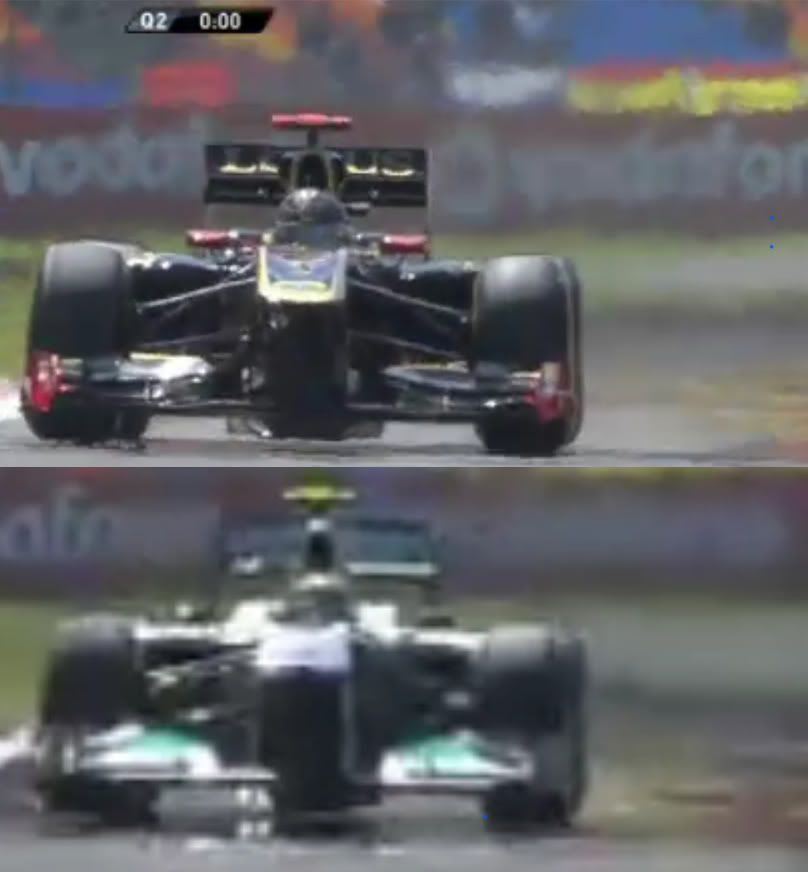There is no indication that it goes under.
None whatsoever. Worst of all the energy content of the exhuast is massively depleted by the time it would reach the diffuser. The temperature actually drops down to about 50 or 70 degrees C.
Worst of all the tyre would create turbulence for the gases as they crash into it and deflect into the diffuser. It wont be as smooth or as high in energy as the other solutions like the redbull's or even the mercedes.
There is no reason for it to go under the car at high speed, as it it counter productive. Secondly i showed clearly on the start/finish straight, and also with the use of CFD that the gases go nowhere under the diffuser. and even if a few streamlins go there, it has no benfit at all.
What is very amusing is that no one is bringing any real logic to the discussion. I wish i was more convincing, as it is clear to me thermodynamically and in terms of fluid mechanics that that the gases going under the diffuser is a pointless exercise with the exhuasts being over 1.5m away.
By the way, in that pic in a low speed corner, all the air goes wide in the side of the car in the exterior of the curve, but the car turning in and a bit of centrifugal force effect would help with that, wouldn't it? In the same picture there is no indication of any exhaust driven air in the side of the car inside the corner. Clear proof that only one exhaust is blowing, for sure, and the Renault have F-exhausts!
This is like flex, everything moves, many effects are transient, and we'll have a hard time clarifying it with still pictures.
Many of you say videos from FP1 show it clearly. I'd love to see them and be convinced that the exhaust gas does not go under the floor, but I had no access to FP1. Any chance anyone could post a video or a link to a video? I searched yesterday for one, with no luck.
No offense Hollus but what you are saying is not evidence it's technobabble.
It's just an opinion with a bunch of tecno jargon in it.
Centrifugal force in a corner would have little effect on the gases. Their mass is very low, and when compared to their energy content the mass and any force on the particles is even more negligible.
We can't actually see the exhaust, we can only see how it interacts with the imediate environment. Once side of the car could be blowing against water on the track while the other could be blowing dust and harder to see the effect. It doesn't mean it's an F ducted exhaust.
By the way, everyone is changing tune now. I never knew you accepted that it blows wide.
What happend to the strongly backed insider info from the renault bosses?
That video of the CFD showing what happens all the way up to 200mph was put up months ago, it was rejected as rubbish. When in fact it's the most accurate explanation so far.
I'll post it again:
[youtube]
http://www.youtube.com/watch?v=8CtLB7g5s9s[/youtube]
The gases do not go to the diffuser. If they did (which they do not!) at 200+ mph anyway, it wouldn't be of any use.
Still waiting for the side skirt theory to be debunked. More evidence just keeps coming in to strengthen it.










